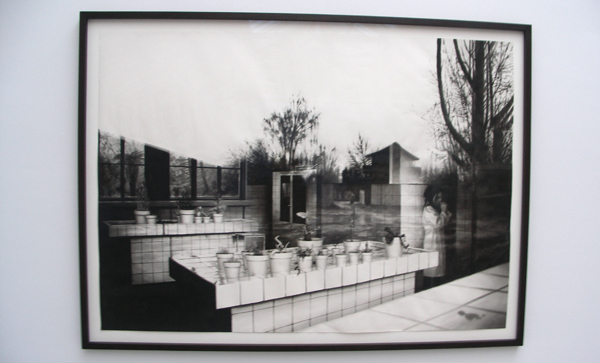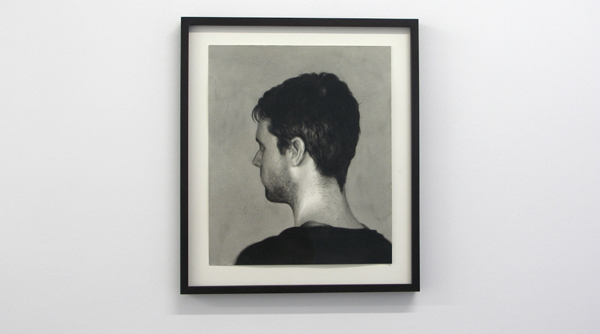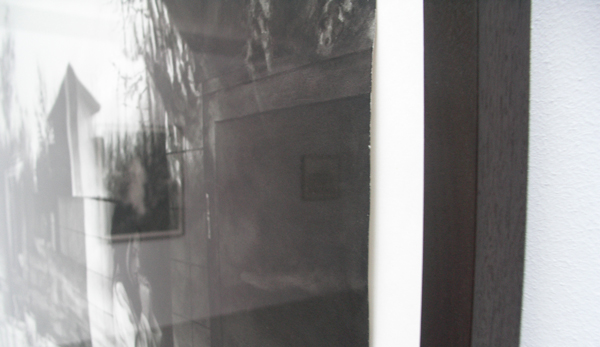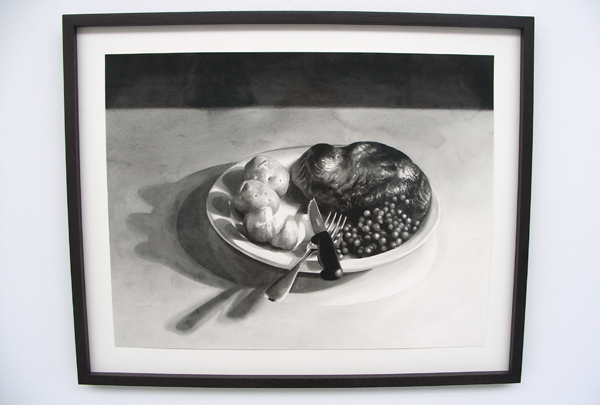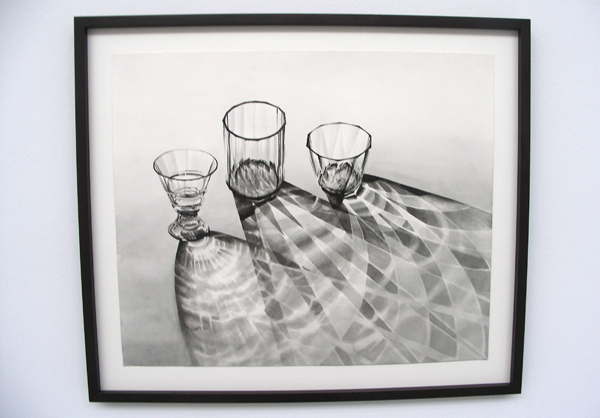Farmer Barbara Suckfüll, at the age of 50, started to hear voices. In 1910, under their command, she began to draw outlines of dishes and cutlery. Writing along and in between the outlines, Suckfüll captures in words her everyday life in the Heidelberg asylum: what she thought, did or ate, her rows with the nurses and what the voices told her. Every word is followed by a full stop, resulting in a dense net of marks that dissolves into abstraction. All Suckfüll’s drawings, which have an aerial perspective, depict the domestic objects that were brought to her cell. There is no three dimensional space and each flattened object is outlined with a succession of 2s, crosses or pinpricks which form chains in an attempt to establish boundaries. (Dissolving of the ego in psychosis leads to the inability to determine where the subject ends and the Other begins.) Suckfüll, it appears does not have the co-ordinates with which to understand the physical world. As there is no fixed view point she found it necessary to turn the paper as she worked. With both the object and the name placed on the paper via the gesture she attempts to stop meaning from sliding off.In an attempt to build herself a structure each word is pinned down with a full-stop. Here the nurse or ‘Red Devil’ brings in a washbasin:
And.Today.It.Is.Sunday.Too
The words are carefully written in and around the linear image of the washbasin. All space is filled and even the spaces between words are punctuated.
And.Today.It.Is.Sunday.Too
The words are carefully written in and around the linear image of the washbasin. All space is filled and even the spaces between words are punctuated.

